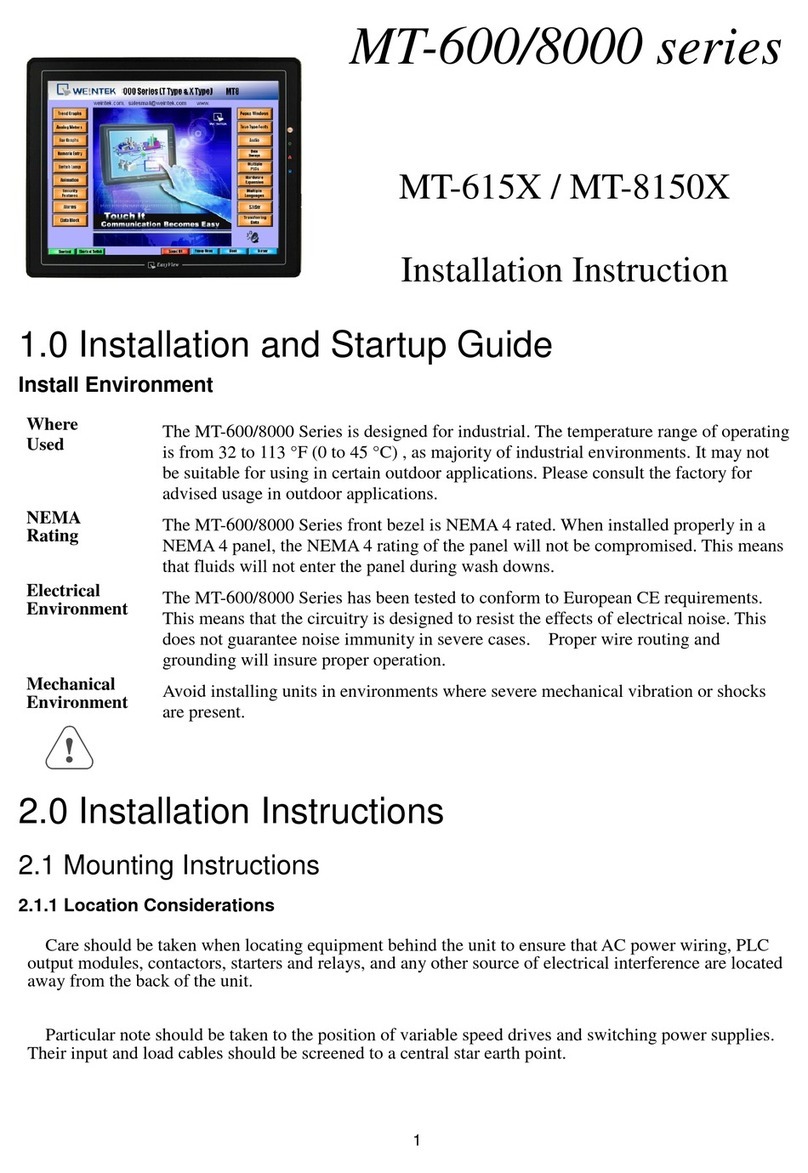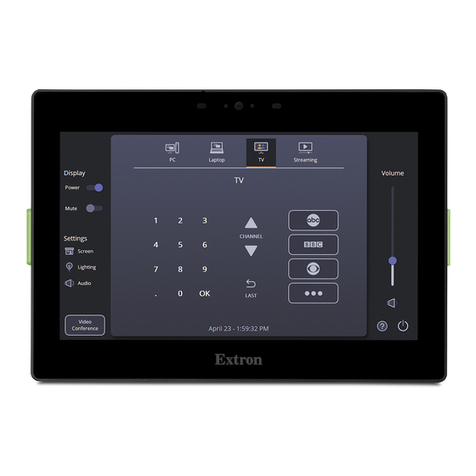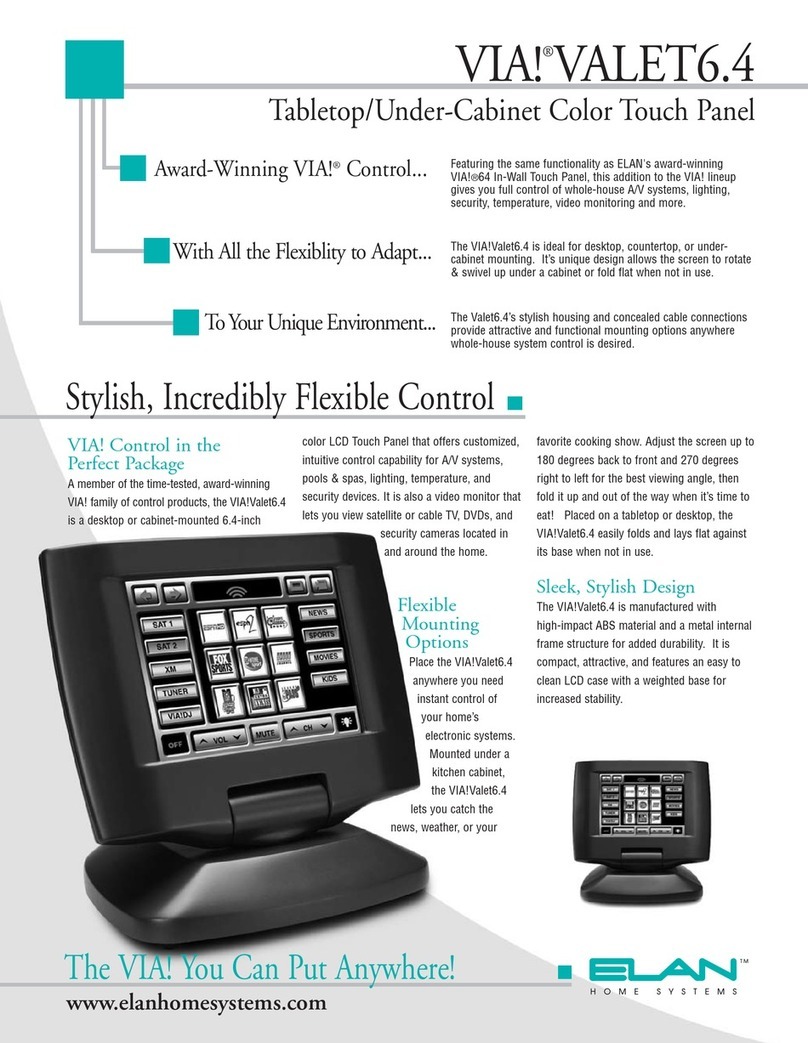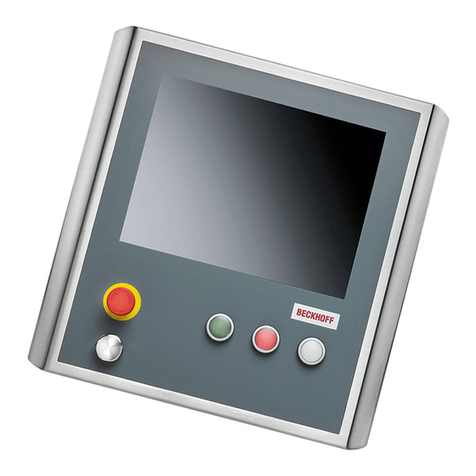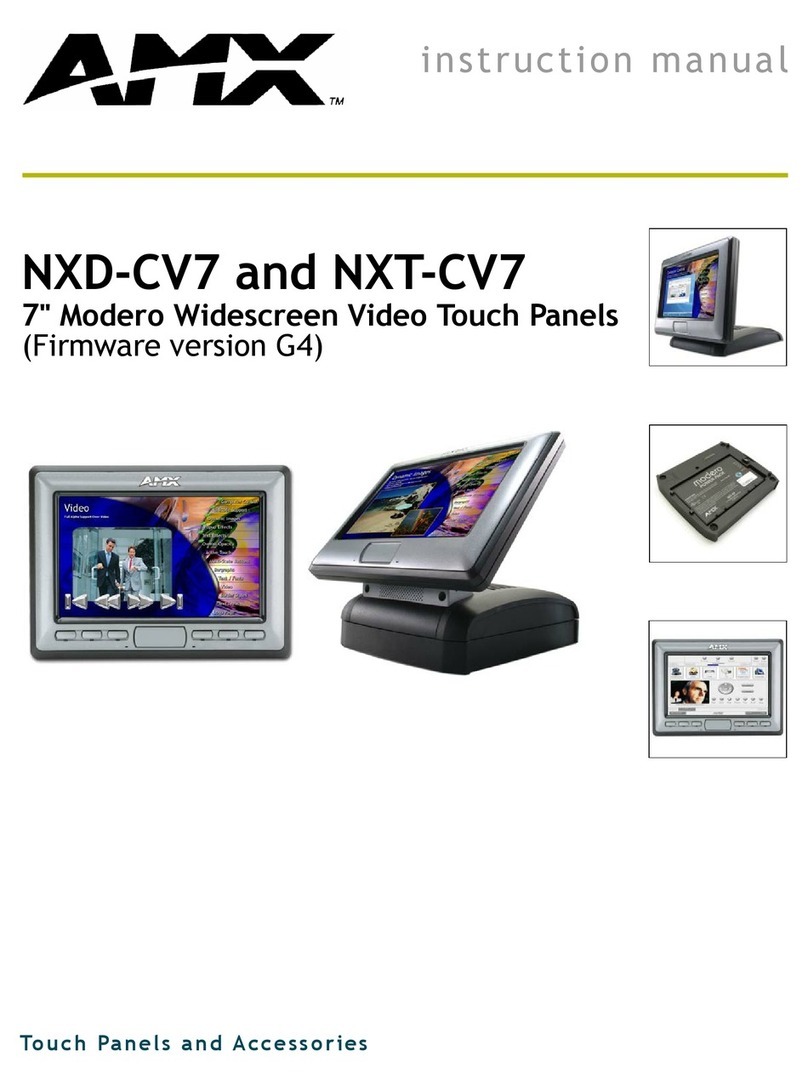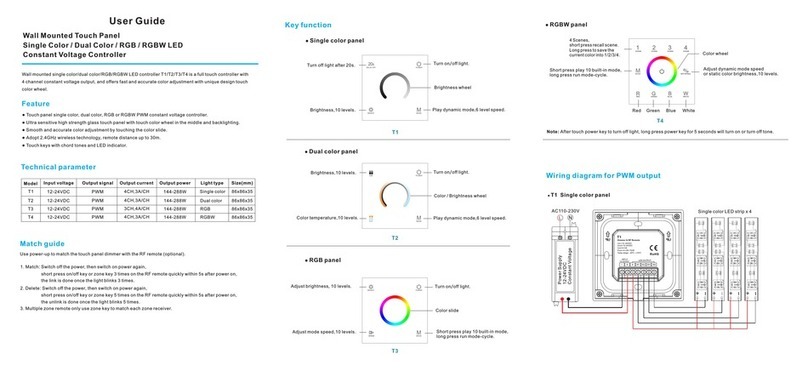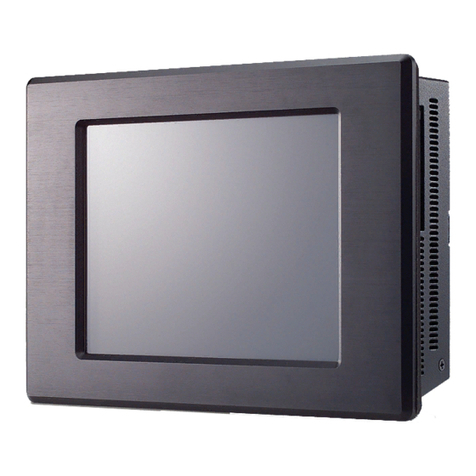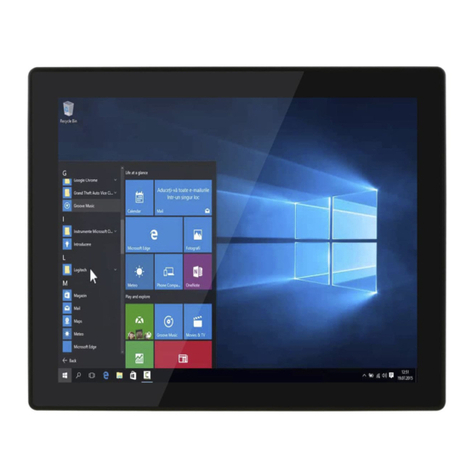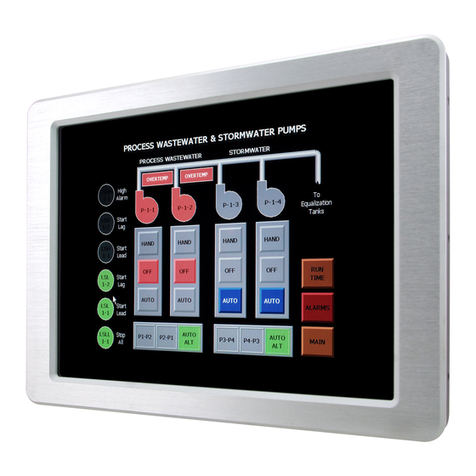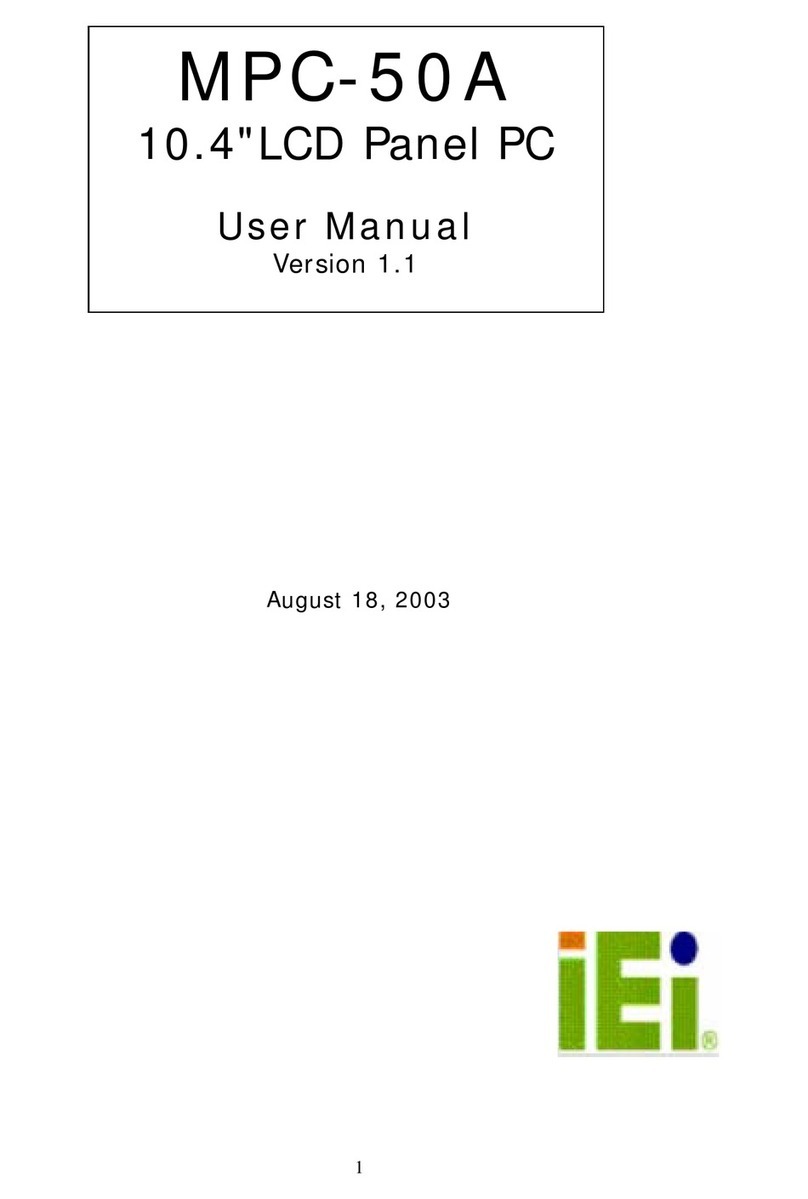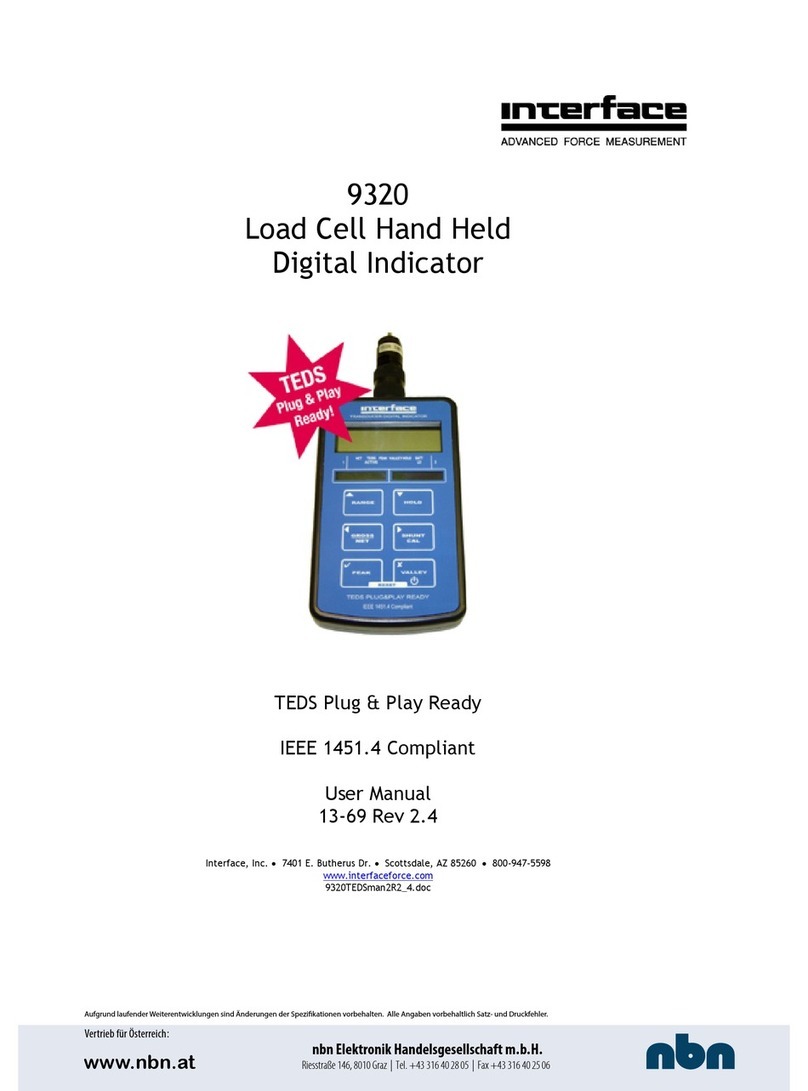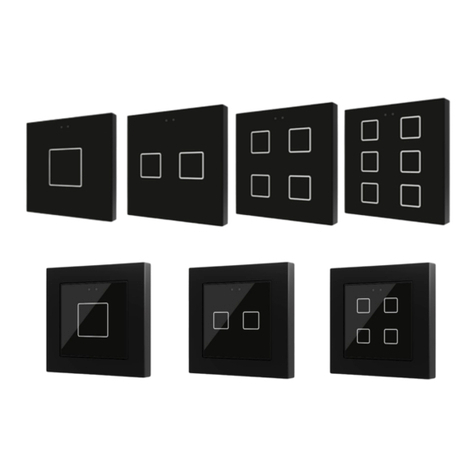
4
Calibration
Calibration is an operation necessary to proper gain adjustment of the measuring circuit using
acoustic calibrator. A proper calibration improves accuracy and allows to diagnose indicator
malfunction. Calibration perform is recommended at least 2 times a year, but it is not necessary
essential - the unit is factory calibrated.
To conduct an acoustical calibration, an acoustic calibrator with 94dB nominal level and frequency
of 1000Hz is needed (class 2 or better). The calibrator should be coupled with the microphone (if the
indicator is hanging on the wall, it is necessary to take it off) and turned on. Then turn off the power
supply of moise indicator, put it in calibration mode using the configuration switch, the location of
which is shown in Fig. 1. The switch should be set to position:
Then turn on the power and observe the indicator. First, all the LEDs light up, then LED in the mid-
dle starts flashing. This means starting the calibration process. A positive result of the calibration is
indicated by lighting green LEDs, the negative – reds. In the case of a failed calibration, the last good
calibration factor is used. The reason of failure can be turned off or malfunctioning acoustic calibra-
tor, unstable reading (caused for example high background noise, vibrations or other disturbances of
the substrate) or damage of the device. Such calibration should be repeated after eliminating the
cause of an error.
NOTE! During calibration, indicator and calibrator must not be exposed to noise level higher
than the nominal level of used calibrator and the vibration of the substrate.
If the calibration is successful, turn off the indicator's power, and then set the configuration switch
according to the location of the instrument (see section Configuration). The indicator is calibrated
and ready to work.
CE marking and conformance to EU Council directives
The product described in this instruction conforms to following EU Council directives:
2004/108/EC Electromagnetic compatibility. The conformance to above-mentioned
requirements is confirmed by CE mark.
The product cannot be thrown away with household waste. Deposit the product in an
authorized electrical and electronic waste collection area for recycling. Contact local
Municipal Bureau or nearest waste disposal company to get more detailed information.

